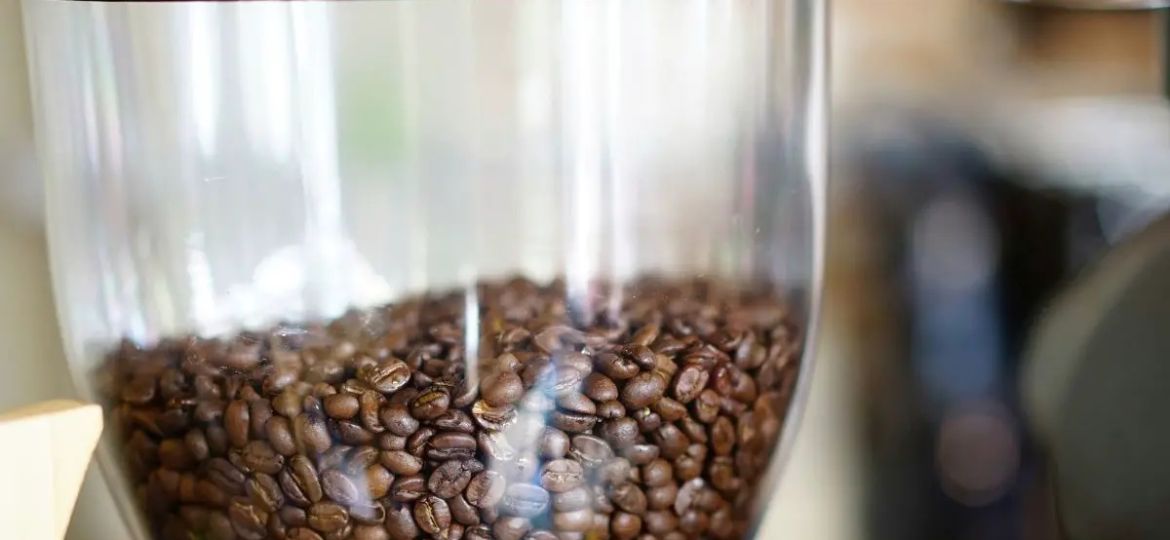
In the modern kitchen, multi-functional appliances not only save space but also enhance culinary creativity. The Ninja blender stands out as a versatile tool, boasting the ability to blend, chop, and even grind various ingredients. Its robust motor and sharp blades are designed to tackle tasks beyond mere blending, prompting many to wonder about its efficacy in grinding coffee beans.
This article explores the Ninja blender’s capabilities in coffee grinding, comparing it to traditional coffee grinders, and provides practical advice for optimal use.
Affirmation that Ninja blenders can grind coffee beans
Yes, Ninja blenders are capable of grinding coffee beans to a satisfactory level for brewing. Though primarily designed for blending, their powerful motors and blades can handle the hard texture of coffee beans, delivering decent results for those looking to grind at home without a dedicated coffee grinder.
Comparison of grinding in a Ninja vs. traditional coffee grinders
While Ninja blenders can grind coffee beans, the consistency and texture of the grind may not match that of traditional coffee grinders. Dedicated coffee grinders, especially burr grinders, are designed to produce a uniform and consistent grind, essential for extracting the full flavor of the coffee.
Ninja blenders, on the other hand, may result in a grind with varying sizes, which can affect brewing quality. However, for casual coffee drinkers not requiring espresso-grade fineness, a Ninja blender offers a convenient alternative.
Cleaning the Ninja Blender before and after use
Maintaining your Ninja blender is crucial to prevent flavor transfer and ensure longevity. Before and after grinding coffee beans, it is recommended to clean the blender thoroughly. This involves rinsing the blender pitcher and blades with warm water immediately after use, using a mild detergent for a deeper clean, and carefully handling the sharp blades during cleaning.
These steps help in removing coffee oils and residue, ensuring that the blender remains in optimal condition for its next use.
Selecting the right Ninja blender model for grinding
Not all Ninja blenders are created equal when it comes to grinding coffee beans. Some models, like the Ninja 12-Tablespoon Coffee & Spice Grinder attachment for Auto-IQ blenders, are specifically designed with grinding in mind. This attachment enhances the blender’s versatility, allowing for a more efficient and tailored grinding experience. Choosing a model or attachment designed for grinding can significantly improve the quality of your coffee grind.
Step-by-step guide to grinding coffee beans
Grinding coffee beans in a Ninja blender involves a straightforward process. Begin by ensuring your blender is clean and dry. Add a small amount of coffee beans to the blender pitcher; overfilling can lead to inconsistent grind sizes. Secure the lid and pulse the blender in short bursts. This method allows the blades to effectively break down the beans without generating excessive heat.
After each pulse, shake the pitcher slightly to redistribute the beans, ensuring an even grind. Repeat the pulsing and shaking until you achieve the desired consistency. For best results, grind in small batches to maintain control over the grind size and prevent overheating the beans.
Adjusting grind size for flavor
The grind size of your coffee beans significantly impacts the flavor of your brew. A finer grind is ideal for espresso, where the water passes through quickly, extracting flavors efficiently. For a coffee maker or French press, a coarser grind is preferable, allowing for a slower extraction and preventing over-extraction.
Experiment with the pulsing duration and intervals to adjust the grind size. Remember, the longer you blend, the finer the grind will be. Adjust your brewing technique accordingly to match the grind size for optimal flavor.
How to achieve the desired consistency
Achieving the desired consistency when grinding coffee beans in a Ninja blender requires attention to detail. Start with small batches to ensure that the beans grind evenly. Use the pulse feature to control the grinding process, stopping frequently to check the consistency. For a coarser grind, pulse briefly and check often.
For a finer grind, increase the pulsing time. If you find the grind is uneven, sift the grounds through a fine mesh sieve and regrind the larger pieces. This method ensures a uniform grind, critical for brewing a balanced cup of coffee.
Ensuring the blender is dry for optimal grinding
Before grinding coffee beans, ensure the blender is completely dry. Moisture can cause the beans to stick together, leading to an uneven grind and potentially damaging the blender’s blades. After cleaning the blender, dry it thoroughly with a towel or let it air dry completely. Always check the pitcher and the blades for any moisture before adding your coffee beans.
A dry environment within the blender is crucial for achieving a consistent grind and preserving the integrity of the coffee oils.
Creative uses of Ninja blender for coffee enthusiasts
Beyond grinding beans, the Ninja blender offers coffee enthusiasts opportunities to explore creative coffee recipes. Use it to blend iced coffee drinks, such as frappuccinos or iced lattes, ensuring a smooth texture. Incorporate spices or chocolate into your brews for a customized flavor.
The blender can also be used to make cold brew concentrate by blending coarse-ground coffee with cold water and then filtering the mixture. These creative uses showcase the Ninja blender’s versatility in enhancing your coffee experience beyond traditional brewing methods.
Cleaning and maintenance tips
Regular cleaning and maintenance of your Ninja blender after grinding coffee ensure its longevity and performance. Remove coffee oils and residue by washing the pitcher and blades with warm, soapy water immediately after use. For stubborn stains or odors, blend a solution of baking soda and water, then rinse thoroughly. Occasionally, deep clean with a vinegar solution to remove buildup.
Always dry the blender components completely before reassembly. Proper care and maintenance not only extend the life of your blender but also ensure the quality of your coffee remains uncompromised.
Advantages and Disadvantages
Utilizing a Ninja blender for grinding coffee offers several advantages, such as convenience and versatility. It’s a quick solution for those without a coffee grinder, providing a decent grind for daily coffee needs. Its multi-purpose nature means fewer appliances cluttering the kitchen.
However, there are downsides. The grind consistency may not rival that of a dedicated coffee grinder, potentially affecting the coffee’s flavor profile. Also, repetitive grinding tasks can wear down the blender’s blades faster than normal use.
Comparing Ninja Blender with Other Grinding Options
When comparing a Ninja blender to traditional coffee grinders, it’s essential to consider your coffee consumption habits. Dedicated coffee grinders, especially burr grinders, offer more consistent grind sizes, crucial for optimizing the extraction and flavor of the coffee. Manual grinders provide a more tactile experience and can also yield excellent results with a bit more effort.
While the Ninja blender is a versatile kitchen tool for occasional grinding, serious coffee aficionados might prefer the control and consistency offered by dedicated grinders.
FAQs
- Is it safe to grind coffee beans in a Ninja blender? Yes, it is safe, provided you use the grinder blade attachment and follow the manufacturer’s instructions.
- What speed setting should I use? For a coarse grind, use a lower speed setting. For a finer grind, use a higher speed or the pulse function for better control.
- How often should I clean my Ninja after grinding coffee? Clean the blender after each use to prevent oil buildup and maintain the blender’s performance.
- Can I grind coffee beans in a blender for Ninja coffee maker? Yes, you can grind beans for a Ninja coffee maker; aim for a medium-fine grind for optimal flavor extraction.
Final Thoughts
The Ninja blender, while not designed specifically for grinding coffee, offers a feasible alternative for those without a coffee grinder. It provides a level of convenience and versatility appreciated in modern kitchens. However, for coffee enthusiasts seeking the utmost in flavor and consistency, investing in a dedicated coffee grinder might be worthwhile.
Understanding the limitations and strengths of using a Ninja blender for this purpose will help users make the most out of their appliance for coffee grinding tasks.









